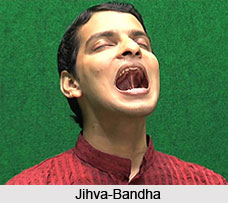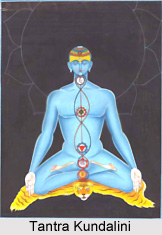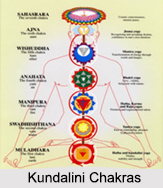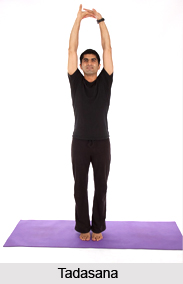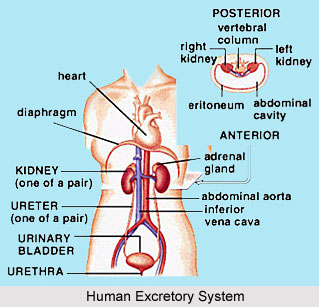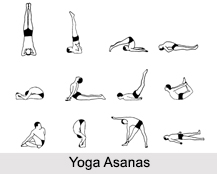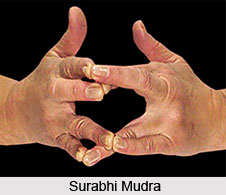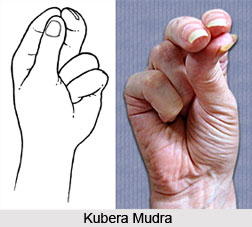Introduction
In the second chapter of “Yoga Sutras,” called Sadhana Pada, Maharashi Patanjali mentions these eight steps to achieve Samadhi. In Sanskrit "Ashta + anga" creates ‘Ashtanga’; where "Ashta" means Eight and "Anga" refers to limbs, thus, the meaning stands as Eight Limb path. The Ashtanga Yoga or Eightfold Path of Yoga is introduced in the second section of the Yoga Sutras, known as the Sadhana Pada. In sutra 2.29, Sage Patanjali presents this path as ashtanga yoga, outlining it as a practical framework for spiritual development. Patanjali designed these eight limbs to guide practitioners beyond the universal sufferings of human life and toward self-realization and ultimate freedom.
These eight limbs are:
Samadhi
Yama
Yama means restraints and this stage of Ashtanga yoga is associated with social and moral conduct. There are five Yamas comprising of the following:
Niyama
Niyamas mean practice or observance and are to be observed for self development. There are five Niyamas:
These disciplines of yama & niyama help to channelize the energy of the organs of action and develop the sense of perception toward the right direction.
Asanas
Asanas means a steady or comfortable posture in yoga. In Ashtanga yoga, Asana refers to different meditative postures. The practice of asana makes the physical body strong and ready for the inward journey.
Pranayama
'Prana' means breath and 'ayama' is widening through control. Together they form 'Pranayama.' When breathing is controlled so as to retain the breath, it is pranayama. Here, holding breath either inside or outside is pranayama. When the breath is controlled for longer time, the number of respirations per minute decreases. Retention of breath brings about a certain condition in the brain, a certain change in the spinal cord and physical body. It also influences the nervous system and thereby brain. Pranayama practice activates the psychic centers and as a result, the covering of knowledge is removed. It also helps in developing capacity for concentration.
These first four stages- Yama, Niyama, Asana and Pranayama are called Bahiranga, which means external. And last three are called as Antaranga.
Pratyahara
Pratyahara means abstraction of the senses, detachment of the senses of perception from other objects. Pratyahara is the link between the external and the internal. It refers to controlling of the 5 sense organs of sight, hearing, touch, speech and smell. When the mind becomes ripe for meditation, the senses rest quietly and stop tuning the mind for their gratification. Then the mind which acts as a bridge between the senses and the soul, free itself from the senses and turns internally to enjoy the spiritual heights. Pratyahara forms the foundation for dharna, dhyana and Samadhi.
Dharana
Dharana means concentration of the mind. When the mind is concentrated on a point, perception becomes intense. When eyes are closed, objects, which may be a thought, an idea or a word, appears intensely in the consciousness. Dharana includes concentration with breaks. In the beginning, one experiences the breaks in the concentration. It is called Vikshepa (disturbances or distractions). One needs to bring the mind back to the concentration.
Dhyana
When there is no break or vikshepa in the Dharana, it turns in to Dhyana. In this state, one becomes oblivious but there is an awareness of Dhayana. This is called sakshi bhava. One is able to see with sakshi bhava and without any attachment. Dhyana is meditation (quiet activity that leads to samadhi). Sleep, subtle desires and cravings, agitation of mind, attachment to objects, sloth, lack of Brahmacharya, gluttony are all hindrances in meditation. It is best to reduce one's desires and cultivate detachment.
Samadhi
Samadhi is a state where there is only the object appearing without the consciousness of one’s own self. In Dharna the concentration is broken, in Dhyana it is continuous, whereas in samadhi, it becomes one with object of concentration.
Dharna, Dhyana and Samadhi together constitute Samyama.
In Samadhi, the self consciousness is lost and the object of concentration remains, and then they merge together. Samadhi is of two kinds:
Samprajnata Samadhi means conscious samadhi. The mind remains concentrated (ekagra) on the object of meditation, therefore the consciousness of the object of meditation persists. Mental modifications arise only in respect of this object of meditation.
This state is of four kinds:
Savitarka: The Citta is concentrated upon a gross object of meditation such as a flame of a lamp, the tip of the nose, or the image of a deity.
Savichara: The Citta is concentrated upon a subtle object of meditation, such as the tanmatras
Sananda: The Citta is concentrated upon a still subtler object of meditation, like the senses.
Sasmita: The Citta is concentrated upon the ego-substance with which the self is generally identified.
Asamprajnata Samadhi means supraconscious. The citta and the object of meditation are fused together. The consciousness of the object of meditation is transcended. All mental modifications are controlled or stoppped (niruddha), although latent impressions may continue.
Kaivalya -Goal of Ashtanga Yoga
The core purpose of yoga is liberation from suffering, a
condition that arises from the mind’s entanglement with the world. This freedom
is achieved through ‘viveka,’
the discriminative discernment that separates Purusha, the
witness-consciousness, from prakriti, the cognitive apparatus that includes the
confused mind and its kleshas. Patanjali presents the eight limbs of yoga as
the systematic means for cultivating this discernment, gradually uncoupling
Purusha from its identification with Prakriti
and all involvement with the ‘citta.’
At its heart, yoga is a discipline of meditation that culminates in a state of consciousness free from all forms of active or discursive thought. Ultimately, the practitioner reaches a condition in which awareness is no longer directed toward any external object, but rests solely in its own pure nature, consciousness unmixed with anything else.
Patanjali maintains that liberation (moksha) arises from a combination of disciplined practice—personal, systematic experimentation, and the epistemological framework of Samkhya philosophy. Central to this path is the recognition that avidya, or ignorance, gives rise to all five kleshas, which in turn generate suffering and bind beings to samsara. Like several other Indian philosophical traditions, the Yoga school teaches that liberation is attained through the removal of ignorance by means of discriminative knowledge and deep self-awareness.
Thus, Astanaga yoga consists of eight steps to experience Kaivalya.
Integrating Ashtanga Yoga into Modern Life
Patanjali’s Eightfold Path offers enduring wisdom which can be integrated into modern lifestyle with the following path.
Practice Ethical Living (Yama) and Personal Discipline (Niyama):
Aim to live with integrity, compassion, and contentment. Incorporate habits such as honesty, non-attachment, self-study, and regular reflection into everyday life.
Engage in Regular Pranayama:
Maintain a consistent routine of physical postures and
mindful breathwork to support both physical vitality and mental balance.
Cultivate Inner Awareness (Pratyahara) and Focus
(Dharana):
Dedicate time each day to turn inward through
self-reflection and meditation, strengthening your ability to concentrate and
think with clarity.
Pursue Meditation (Dhyana) and Seek Enlightenment
(Samadhi):
Experiment with different meditation practices to deepen
your spiritual journey and move toward a state of inner stillness, harmony, and
realization.



